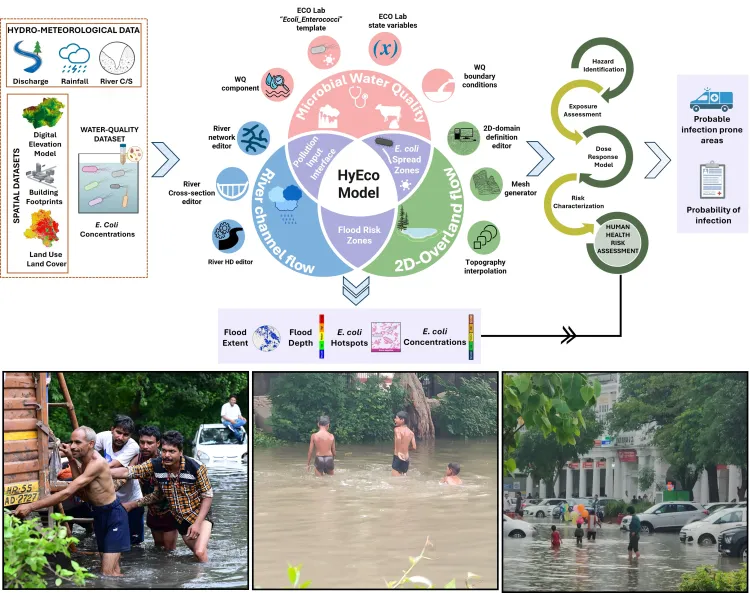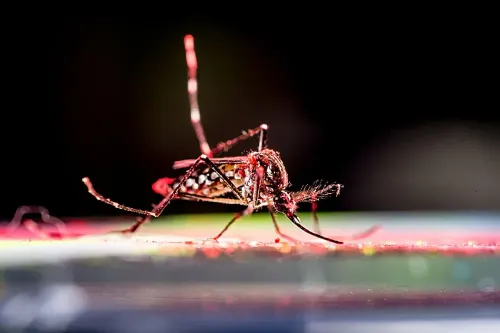How is IIT Roorkee's New Tool Predicting Flood-Related Diseases in Cities?

Synopsis
Key Takeaways
- HyEco predicts the spread of disease-causing microbes in floodwaters.
- Over 60% of flooded areas during the 2023 Delhi floods were in high-risk zones.
- Children face significant health risks from contaminated floodwaters.
- The platform enables quick action to mitigate health threats.
- HyEco supports national health and disaster management initiatives.
New Delhi, Aug 19 (NationPress) Researchers at the Indian Institute of Technology (IIT) Roorkee have created HyEco — a groundbreaking integrated flood-water quality modeling platform that illustrates how disease-causing microbes can propagate in floodwaters and identifies areas where populations are most vulnerable.
This innovative framework, which forecasts the spread of urban floodwaters within a city, was evaluated during the 2023 floods in Delhi.
The findings were concerning; over 60 percent of inundated regions fell within high to very high risk zones, with harmful bacteria such as E. coli detected at levels hundreds of thousands of times above acceptable thresholds.
Children, in particular, were found to be at more than double the internationally recognized safety limits when exposed to floodwaters.
Floodwaters in various Indian cities often combine with untreated sewage and industrial waste, creating a hazardous mixture that can lead to outbreaks of diarrhea, cholera, and other perilous waterborne illnesses.
HyEco empowers authorities to anticipate these dangers, pinpointing "health danger hotspots" to facilitate prompt actions for public safety, such as enhancing sewage treatment, clearing drains prior to the monsoon season, issuing SMS alerts to residents, and implementing advanced water purification techniques.
"Floods do more than just damage infrastructure; they can instigate hidden health emergencies. HyEco equips us to identify where the risks are greatest, enabling preemptive measures," remarked Prof. Mohit P. Mohanty from the Department of Water Resources Development and Management at IIT Roorkee.
"This research exemplifies how science can benefit society. By assisting cities in preparing for both visible and concealed flood threats, HyEco is poised to contribute significantly to creating safer, healthier, and climate-resilient communities both in India and globally," stated Prof. Kamal Kishore Pant, the Director of IIT Roorkee.
HyEco is designed for implementation not only in India but also in flood-prone cities worldwide, ranging from Mumbai to Manila, Jakarta to New Orleans, offering an innovative science-based approach to mitigate the risk of waterborne diseases post-flood.
This research aligns with vital government initiatives, including the National Mission for Clean Ganga, Swachh Bharat Mission, National Disaster Management Plan, and the National Health Mission.
Moreover, it contributes to several United Nations Sustainable Development Goals (SDGs), such as SDG 3 (good health and well-being), SDG 6 (clean water and sanitation), SDG 11 (sustainable cities and communities), and SDG 13 (climate action).









